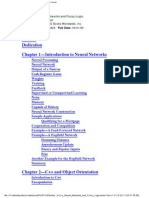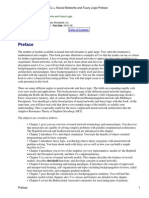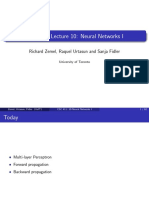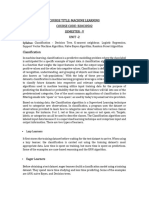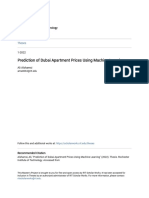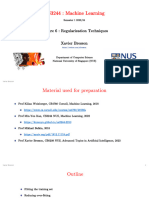0% found this document useful (0 votes)
61 views42 pagesNeural Network & Fuzzy Logic SRM
Neural networks are mathematical models that learn from examples to perform tasks like pattern recognition and prediction. They are inspired by biological neural networks in the brain and consist of connected input, hidden, and output units. Neural networks are trained using algorithms like backpropagation to minimize error and learn by adjusting weights between units. They are widely used for applications like data mining, forecasting, and medical diagnosis.
Uploaded by
haripriyailangoCopyright
© © All Rights Reserved
We take content rights seriously. If you suspect this is your content, claim it here.
Available Formats
Download as PDF, TXT or read online on Scribd
0% found this document useful (0 votes)
61 views42 pagesNeural Network & Fuzzy Logic SRM
Neural networks are mathematical models that learn from examples to perform tasks like pattern recognition and prediction. They are inspired by biological neural networks in the brain and consist of connected input, hidden, and output units. Neural networks are trained using algorithms like backpropagation to minimize error and learn by adjusting weights between units. They are widely used for applications like data mining, forecasting, and medical diagnosis.
Uploaded by
haripriyailangoCopyright
© © All Rights Reserved
We take content rights seriously. If you suspect this is your content, claim it here.
Available Formats
Download as PDF, TXT or read online on Scribd
/ 42










